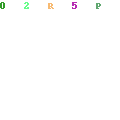Every successful puppy or dog trainer follows certain principles to make their training effective. However, some do not succeed in training their puppy. I will now discuss the most common mistakes people make when training their puppy.
1. They don’t set themselves up as the pack leader.
 One successful approach to dog training is based on our knowledge of the instinctual way dogs behave within a pack. Dominance is an integral factor in the dog pack. There is a definite order of dominance within the pack. The most dominant are the pack leaders, a male and a female.
One successful approach to dog training is based on our knowledge of the instinctual way dogs behave within a pack. Dominance is an integral factor in the dog pack. There is a definite order of dominance within the pack. The most dominant are the pack leaders, a male and a female.
They are the first to eat, they lead the hunt and when they sleep, they take the higher ground.
To be successful in dog training, we put ourselves into position as the leader of the dog pack. This can be done by not allowing your puppy onto higher ground such as beds and sofas. Also make sure you eat a small amount of food before you give your puppy his food. This is to allow him clearly to see you eat first.
We need to have a calm and assertive manner. It is important not to be nervous or indecisive.
2. They don’t employ consistently the concept of positive reinforcement.
We must clearly comprehend that we must reward wanted behaviors in our dog by giving treats or attention the instant our dog engages in the behavior. We can link a verbal command with the behavior as it occurs and give a treat immediately after it.
Negative reinforcement such as shouting at a dog or punishing him in some way is nevertheless giving the dog attention and since he wants attention, the attention can act as a positive reinforcement rather than a negative one. It has been found to be ineffective. What is effective is to give no attention at all to the dog when it engages in an undesired behavior. We may need to physically intervene if we need to stop some destruction going on, but we should keep the same assertive and cool manner and not give any more attention than we have to.
3. They make dog obedience training sessions too long.
Sessions are best kept brief so that your puppy’s energy and attention are good. Learning works best in short stints. We should make the sessions only ten minutes for young puppies and up to twenty minutes for older ones.
4. They underestimate the sheer time and energy required to train a puppy.
Puppy training requires a commitment of time and energy in order to be successful. The owner will need to have great patience and to be persistent. He will also need to be very consistent.
5. They think that training only occurs during an organized training session.
Puppy training is happening all the time, not just in training sessions but whenever he is with you or anyone else. The owner needs to ensure that everyone who comes into contact with the puppy always behave in a consistent manner i.e. always ignoring undesired behaviors and positively reinforce desired behaviors.
It is important to keep training sessions fun and enjoyable for your puppy. They should never become a chore.
